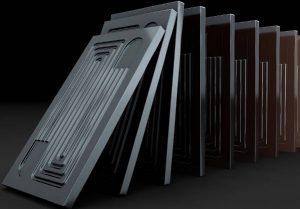[ad_1]
Solar-thermal generation – where sunlight is focussed onto structures that absorb it as heat, which is then used to drive turbine-style generators – is proposed as an alternative to photo-voltaic generation, with the particular advantage that heat can be stored in bulk. “Storing solar energy as heat can already be cheaper than storing energy via batteries,” claimed Purdue engineering professor Kenneth Sandhage.
Sandhage is looking into the situation where solar-derived heat is stored in a molten salt, and then transferred to closed system of a working fluid and turbine to turn a generator.
In this case, the fluid is high-pressure super-critical carbon dioxide (sCO2) which, according to Purdue, can deliver >20% more efficiency than the conventional sub-critical steam-based Rankine cycle.
To get the heat from molten salt to sCO2, and survive the high pressures and corrosive environment involved, the team is proposing flat heat-exchanger plates created using PCB-like technology from a tungsten – ceramic zirconium carbide composite.
Already, failure strengths of over 350Mpascal at 1,073K, and thermal conductivity 2x – 3x greater than iron-based or nickel-based alloys, have been demonstrated, according to the paper ‘Ceramic–metal composites for heat exchangers in concentrated solar power plants‘ in Nature. Corrosion resistance to CO2 at 1,023K and 20Mpascal was demonstrated by copper-coating the ceramic and adding 50ppm of carbon monoxide to the CO2.
Purdue worked with Georgia Tech, Oak Ridge National Laboratory and the University.
[ad_2]
Source link

